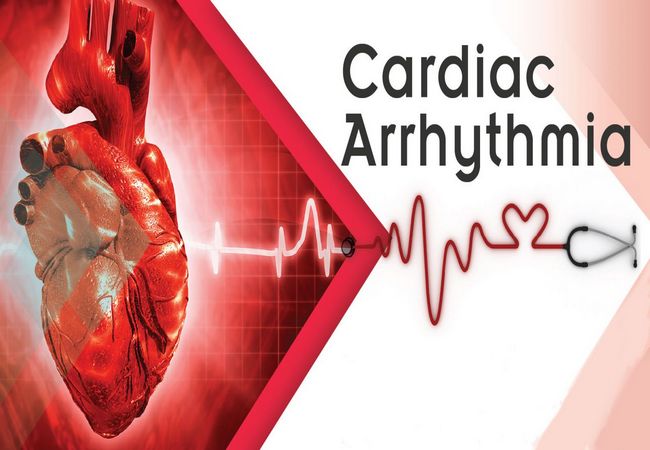Cardiac Arrhythmia Definition:
Cardiac arrhythmia may be defined as a clinical condition which occur when the electrical impulses that coordinate the heartbeats don’t work properly, causing the heart to beat too fast, too slow or irregularly.

Risk Factors of Cardiac Arrhythmia:
The following are possible risk factors for arrhythmia:
- Old age – the heart weakens with age.
- Inherited gene defects – people who are born with a heart abnormality.
- Heart problems – people with narrowed arteries, those who have had a heart attack, heart valves that do not function properly, previous heart surgery, and cardiomyopathy.
- Hypothyroidism or hyperthyroidism – problems with the thyroid gland.
- Medications – some prescription medications, and OTC drugs, such as cough and cold drugs containing pseudoephedrine
- Hypertension- people with high blood pressure are much more likely to develop coronary artery disease and other heart problems.
- Obesity – obesity increases the risk of arrhythmia.
- Uncontrolled diabetes– patients with uncontrolled diabetes are more likely to develop arrhythmia compared to someone with diabetes who is receiving proper treatment.
- Obstructive sleep apnea- patients whose breathing stops briefly during the night.
- Electrolyte imbalances – electrolytes, such as calcium and potassium, are essential for the proper conduction of electricity between cells and through cells. If electrolyte levels are out of balance, it can result in arrhythmia.
- Heavy and regular alcohol consumption – people who regularly consume large quantities of alcohol.
- Too much caffeine- caffeine may accelerate the heart rate and eventually cause arrhythmias.
- Illegal drugs – amphetamines and cocaine can cause arrhythmias, especially ventricular fibrillation.
Nursing Interventions of Cardiac Arrhythmia:
- Document any arrhythmias in a monitored patient.
- Notify the doctor if a change in pulse pattern or rate occurs in an unmonitored patient.
- As ordered, obtain an ECG tracing in an unmonitored patient to confirm and identify the type of arrhythmia present.
- Be prepared to initiate cardiopulmonary resuscitation, if indicated, when a life threatening arrhythmia occurs.
- Administer medication as ordered, monitor for adverse effect, and perform nursing interventions related to monitoring vital signs, hemodynamic monitoring, and appropriate laboratory work.
- Provide adequate oxygen and reduce heart workload while carefully maintaining metabolic, neurologic, respiratory, and hemodynamic status.
- Evaluate the monitored patient’s ECG regularly for arrhythmia.
- Monitor for predisposing factors, such as fluid and electrolyte imbalance, and signs of drug toxicity, especially with digoxin.
- Teach the patient how to take his pulse and recognize an irregular rhythm and instruct him to report alterations from his baseline to the doctor.
- Emphasize the importance of keeping laboratory and physician’s appointments.

Maria Khatun Mona is a Founder and Editor of Nursing Exercise Blog. She is a Nursing and Midwifery Expert. Currently she is working as a Registered Nurse at Evercare Hospital, Dhaka, Bangladesh. She has great passion in writing different articles on Nursing and Midwifery. Mail her at “maria.mona023@gmail.com”
